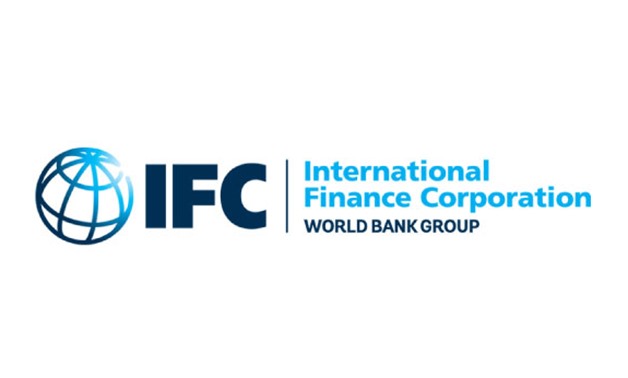
Verbatim | Jun 28,2025
Oct 16 , 2021
By Ameha Tefera
It is not easy for banks to raise their liquidity positions. Part of the reason for this is the high inflationary rate and cost of customer acquisition. But some creative methods can be applied to enhance deposit mobilisation, writes Ameha Tefera (ambet22002@yahoo.com), staff at Commercial Bank of Ethiopia (CBE).
Usually, significant investments are facilitated through financial institutions like banks, which are mediators among savers and borrowers. To facilitate higher levels of investment, financial institutions must be adequately liquid. They try to gain this position through continuous deposit mobilisation strategies, including branch expansion, widening saving products and raffle systems.
Since mobilising deposits within a country is low cost, stable and responsive to monetary policies, it is preferred to foreign lending for countries. But it is not easy for banks to raise their deposit positions. Part of the reason for this is the high inflationary rate and cost of customer acquisition. But some methods have been proven to be successful in other countries and should be adopted, or built upon, in Ethiopia.
The first is creative incentive offers for customers in the form of progressive saving interest rates. People save their money in banks seeking a secure location for their deposits and flexible access to it whenever they need to take it out. Different banks compete by giving customers savings rates more attractive than one another or a product package. Ideally, this should be higher than the inflationary rate in the economy to protect against negative interest rates whereby the customer is losing money on their savings.
In most countries, including Ethiopia, banks give higher interest rates for time deposit accounts or special saving schemes by getting into a special contract. The account holders will not be allowed to withdraw money until the agreed specified time in exchange for a higher interest rate than in a savings account. Giving progressive saving interest rate incentives sweetens up the deal for customers and strengthens the bank’s liquidity position. Since deposit interest rate and volume of saving in a bank have a direct relationship, giving clientele an interest incentive package will have a high impact on the mobilisation of deposits available for investment.
Applying a saving interest rate incentive per the bank’s paying capacity on potential depositors’ accounts according to the range of deposit volume, length of period and nature of deposit enables the bank to have more depositors from the formal and informal economies. Since the deposit interest incentive rate is an arbitrary percentage, it can be adjusted according to the deposit volume and the bank deposit interest-paying capacity.
Applying saving interest rate incentives on the customer’s account reduces the gap between the informal and formal financial systems and improves the bank's profitability and liquidity to enhance investments. Creating additional incentives into depositors’ accounts reinforces the stability of a customer’s deposit at the originating bank. This, in turn, encourages the application of saving interest rate incentives into the depositor account, which enables the bank to mobilise more stable deposits.
Another creative application by banks would be to give some agency to depositors on how their money is used. Typically, banks give out loans using the depositor’s money without the latter’s say in it. An alternative would be for depositors to shift to investor position in collecting proportional credit price instead of deposit interest rate – the bank will then receive an interest rate commission.
Unless the bank needs to hold and disburse the fund for its investment purposes, the interest rate that is applied to the deposited money ceases immediately after the fundholder gives consent to the bank to disburse the deposited amount for a borrower and to receive credit price instead of deposit interest rate. Basically, the depositor becomes a creditor, and the bank is an agent – a system known as an interest rate commission agent banking system (AIRCABS ). The bank makes its money from a commission on the agreed-upon credit price.
By using AIRCABS, banks are enabled to mobilise more stable funds in the customer deposit accounts and enhance advances to businesses, increasing investment. To have a more resilient banking sector in the economy, banks need to be creative in dealing with customers and mobilising deposits.
PUBLISHED ON
Oct 16,2021 [ VOL
22 , NO
1120]


Verbatim | Jun 28,2025

Editorial | Mar 09,2024

In-Picture | Jun 15,2024

Commentaries | Jun 21,2025

Radar | Oct 14,2023

Viewpoints | Jul 13,2019

News Analysis | May 11,2025

Commentaries | Oct 15,2022

Agenda | Jan 11,2020

Fortune News | Sep 28,2019

My Opinion | 131547 Views | Aug 14,2021

My Opinion | 127902 Views | Aug 21,2021

My Opinion | 125878 Views | Sep 10,2021

My Opinion | 123508 Views | Aug 07,2021

Dec 22 , 2024 . By TIZITA SHEWAFERAW
Charged with transforming colossal state-owned enterprises into modern and competitiv...

Aug 18 , 2024 . By AKSAH ITALO
Although predictable Yonas Zerihun's job in the ride-hailing service is not immune to...

Jul 28 , 2024 . By TIZITA SHEWAFERAW
Unhabitual, perhaps too many, Samuel Gebreyohannes, 38, used to occasionally enjoy a couple of beers at breakfast. However, he recently swit...

Jul 13 , 2024 . By AKSAH ITALO
Investors who rely on tractors, trucks, and field vehicles for commuting, transporting commodities, and f...

Jun 28 , 2025
Meseret Damtie, the assertive auditor general, has never been shy about naming names...

Jun 21 , 2025
A well-worn adage says, “Budget is not destiny, but it is direction.” Examining t...

Jun 14 , 2025
Yet again, the Horn of Africa is bracing for trouble. A region already frayed by wars...

Jun 7 , 2025
Few promises shine brighter in Addis Abeba than the pledge of a roof for every family...

Jun 29 , 2025
Addis Abeba's first rains have coincided with a sweeping rise in private school tuition, prompting the city's education...

Jun 29 , 2025 . By BEZAWIT HULUAGER
Central Bank Governor Mamo Mihretu claimed a bold reconfiguration of monetary policy...

Jun 29 , 2025 . By BEZAWIT HULUAGER
The federal government is betting on a sweeping overhaul of the driver licensing regi...

Jun 29 , 2025 . By NAHOM AYELE
Gadaa Bank has listed 1.2 million shares on the Ethiopian Securities Exchange (ESX),...